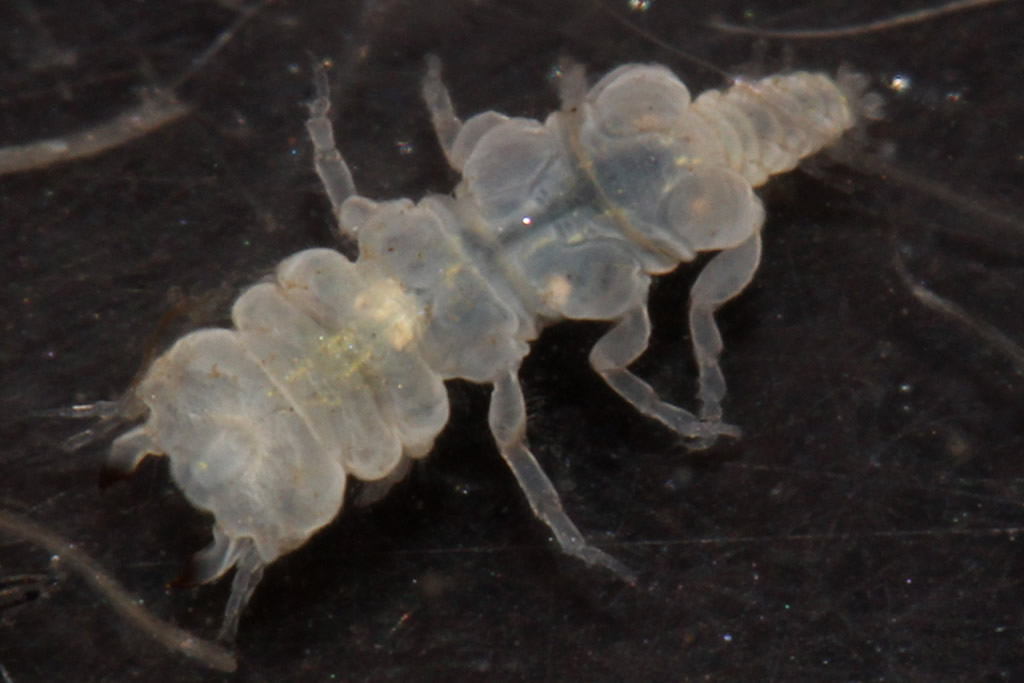Paragnathia formica (Hesse, 1864)
Status:
Native
ID Difficulty
Identification
Paragnathia formica is similar to Gnathia species, having only five pairs of legs and exhibiting marked sexual dimorphism. Males have large heads and mandibles and females are inflated with fused pereon somites 3-5 and reduced mouthparts. The young (praniza larvae) have a similar shape to the females. P. formica are between 2.5 and 5.0 mm in length. Unlike species in the genus Gnathia, the male pylopod (mouthpart deriving from the modified first pereopod) has five articles (in Gnathia it has two or three).
Distribution and Habitat
Young praniza larvae are external parasites of fish. Late praniza larvae and adults inhabit mud cliffs around MHWN in estuaries and saltmarshes. Adults live in colonies in short galleries, whilst praniza larvae may be scattered more generally in the habitat.
Males, which live more than two years, can be found all year round, whilst females, which usually live for about a year, are mostly found between May and October. For more details on finding this species, see here.
P. formica has mostly been recorded in south-western Britain, though it has also been found on Tyneside (in 2022) and in Northumberland (Sheader 2000), as well as in south-west Scotland (in 2019), so it is rather more widespread than the NBN map indicates.
References
Naylor, E. & A. Brandt. 2015. Intertidal Marine Isopods. Synopses of the British Fauna (New Series), No. 3. Field Studies Council, for The Linnean Society of London.
Sheader, Martin. 2000. Isopoda. In Judy Foster-Smith (ed.) The Marine Fauna and Flora of the Cullercoats District: Marine Species Records for the North East Coast of England (Volume 1), pp. 377-390. Sunderland: Penshaw Press.
Links
Images and tips on finding P. formica: https://www.flickr.com/photos/56388191@N08/8585585684/in/album-72157633073069101/
World Register of Marine Species (WoRMS): https://www.marinespecies.org/aphia.php?p=taxdetails&id=119001
Aphotomarine: https://www.aphotomarine.com/isopoda_paragnathia_formica.html
Ocean Biodiversity Information System (OBIS) distribution map: https://mapper.obis.org/?taxonid=119001








